Getting a vehicle onto an Australian mine site isn’t the same as driving down the highway. Every major operator and many state regulators set site-specific “mine spec” standards that govern vehicle fit-out, safety systems, communications, and documentation. If you’re a contractor, fleet manager or purchasing officer, understanding the differences between BHP, Rio Tinto, Fortescue (FMG), Glencore, Santos and other operators will save time, reduce re-works at gates and protect your crews.
This longform guide explains the common baseline requirements, then walks through the standout specs and practical steps for major mining companies so you can plan vehicles that pass first time. Where useful, we link to additional resources and practical content from Trend Rentals to help with hire or retrofit solutions.
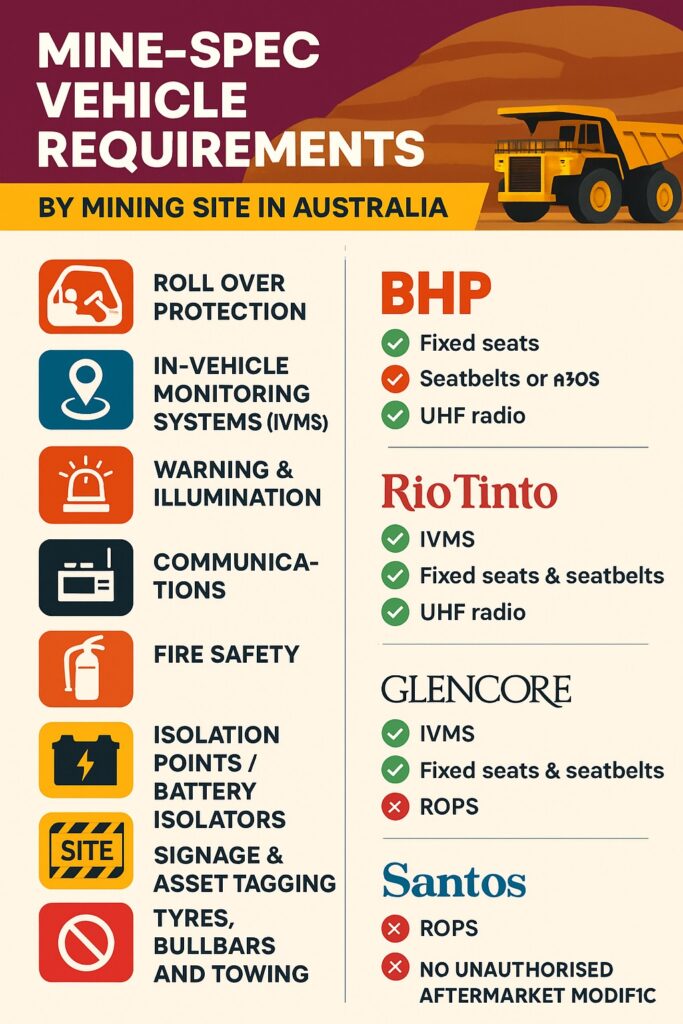
Quick primer — what “mine spec” usually means
Although each site differs, most mine-spec fit-outs address the same safety and operational risks. Typical components include:
- Rollover protection / fixed seating & seatbelts (ROPS where required; all occupants must have three-point belts).
- In-vehicle monitoring systems (IVMS) — GPS + driver behaviour logging, often mandatory for contractors.
- Warning & illumination — rotating beacons, high-visibility signage, dedicated work lights and daytime running lamps where required.
- Communications — UHF radio (site frequency programmed), hands-free systems, and sometimes site-specific telemetry.
- Fire safety — rated fire extinguishers and sometimes vehicle fire suppression for HOVs.
- Isolation points / battery isolators and emergency stop buttons.
- Signage & asset tagging — site decals, unit numbers and operator ID.
- Tyres, bullbars and towing — tyre type, bullbar design and towing must comply with ADRs and site rules (some sites restrict or forbid certain bullbar types).
- No unauthorised aftermarket modifications that could compromise crash performance or airbag operation.
These are the building blocks most operators reference in their vehicle and contractor standards. For examples of mine-spec compliance and practical retrofits, see our Trend Rentals guides on mine-spec compliance and why resource companies rely on mine-spec vehicles.
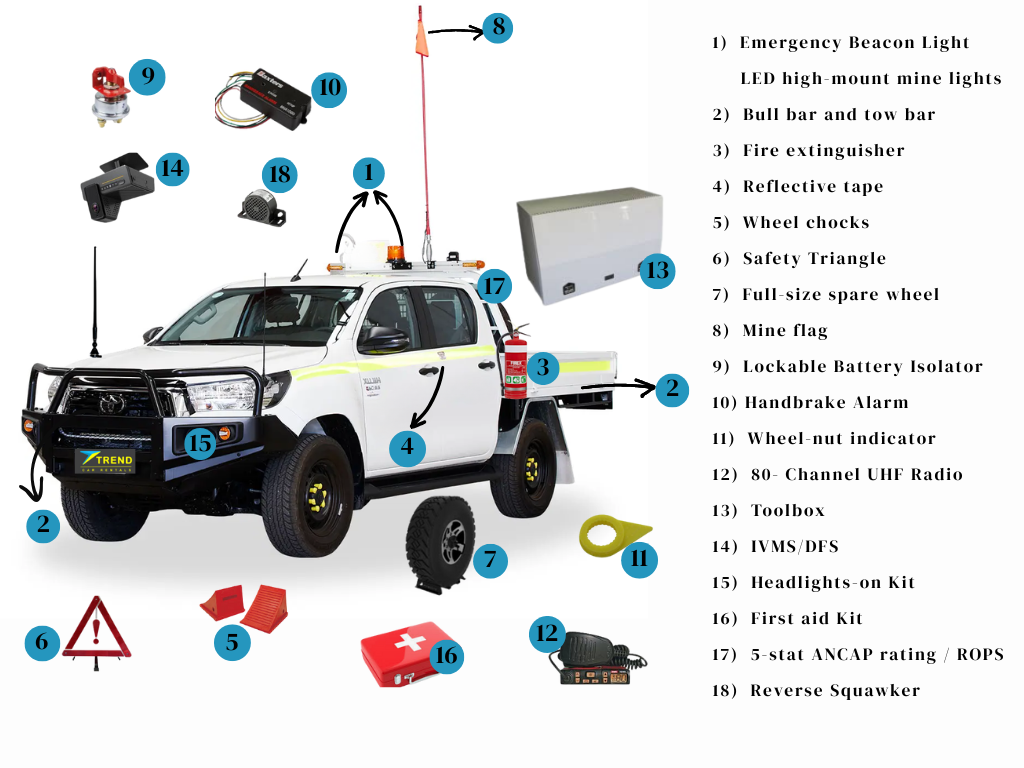
BHP — mandatory vehicle standards and contractor obligations
What to expect: BHP’s safety documents make clear that all BHP and contractor light vehicles used on site must meet the requirements in their vehicle appendices unless impracticable (e.g., underground vehicles, emergency response vehicles). The company focuses on preventing vehicle/vehicle and vehicle/pedestrian interactions and enforcing minimum vehicle safety features and journey risk management. Key expectations:
- Vehicles used on site must meet BHP’s documented light-vehicle requirements (appendices in their safety/vehicle standards).
- Emphasis on documented journey risk assessments, licensing and driver competency.
- Prohibition or strict control of aftermarket changes that reduce occupant protection.
Practical tip for contractors: Keep a compliant vehicle file with screenshots of vehicle occupant ratings, IVMS installation certificates, driver licences and a signed journey risk assessment for each trip. This is commonly requested at BHP site gates.
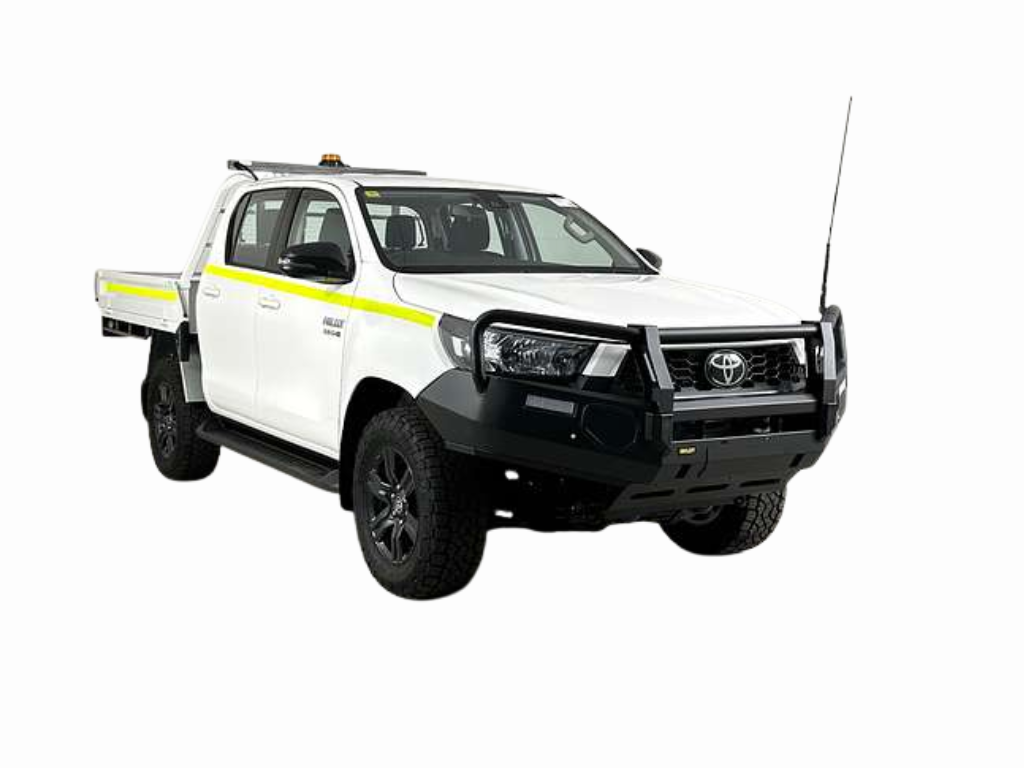
Rio Tinto — Vehicles & Driving Standard (company-wide)
What to expect: Rio Tinto publishes a Vehicles & Driving Standard that applies across units and to contractors. The standard is safety-centric and covers:
- Requirements that apply to all vehicles used on Rio operations (employee and contractor).
- Controls to prevent vehicle interactions and single-vehicle incidents (e.g., seatbelt use, speed management, vehicle condition).
- Technical and administrative requirements in addition to local management system rules (including IVMS, maintenance regimes and training).
Rio’s standard is broad and enforces both technical fit-outs and behavioural controls; check the RTIO guidance notes for vehicle telemetry and driver awareness systems when supplying contract vehicles.
Practical tip: Rio Tinto often requires advance approval of contractor vehicle fit-outs. Submit fit-out photos, IVMS data plans and a pre-inspection certificate when seeking site access.
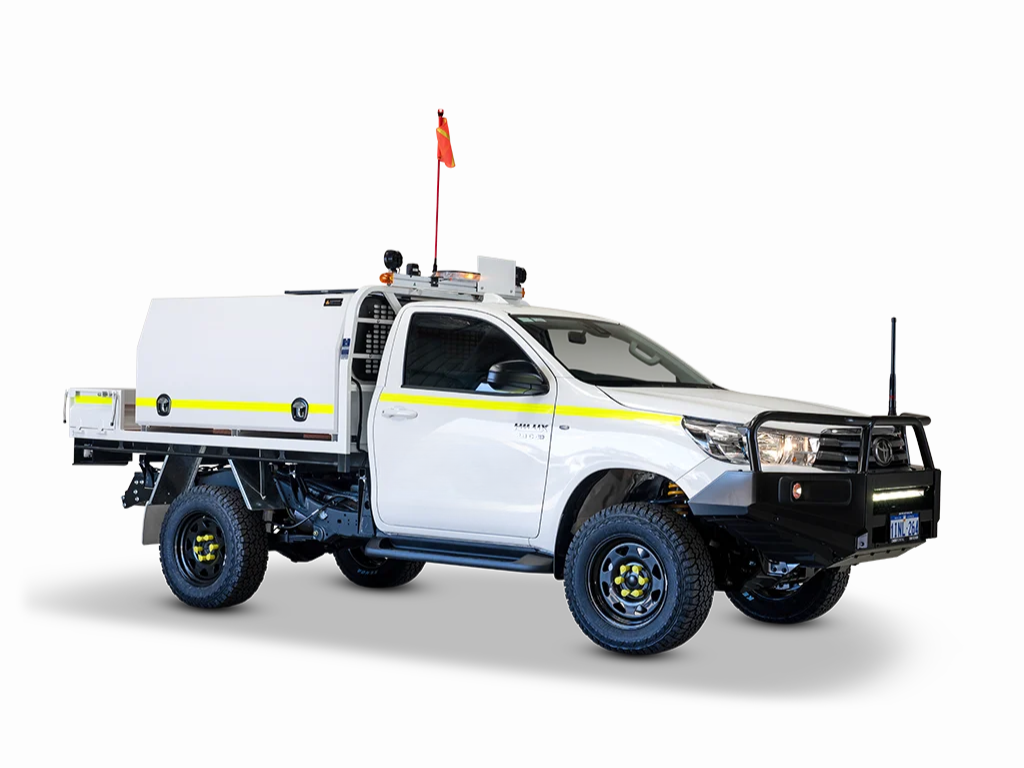
Fortescue Metals Group (FMG) — Contractor Minimum Requirements
What to expect: Fortescue’s contractor minimum requirements and HSES contractor specifications are detailed and operation-specific. FMG requires contractors to comply with their HSE specification documents and often enforces:
- Compliance with a contractor health & safety specification, including vehicle standards and site access procedures.
- Specific appendices for site access, communication systems and vehicle equipment lists.
Fortescue documents stress that the contractor’s management systems and the site’s legal obligations together form the full compliance framework. If you supply vehicles to FMG projects, expect to follow an extensive checklist and to produce supporting evidence.
Practical tip: FMG frequently updates supplier documents. Confirm the revision date on the specification and re-submit any vehicle fit-out records after major updates.
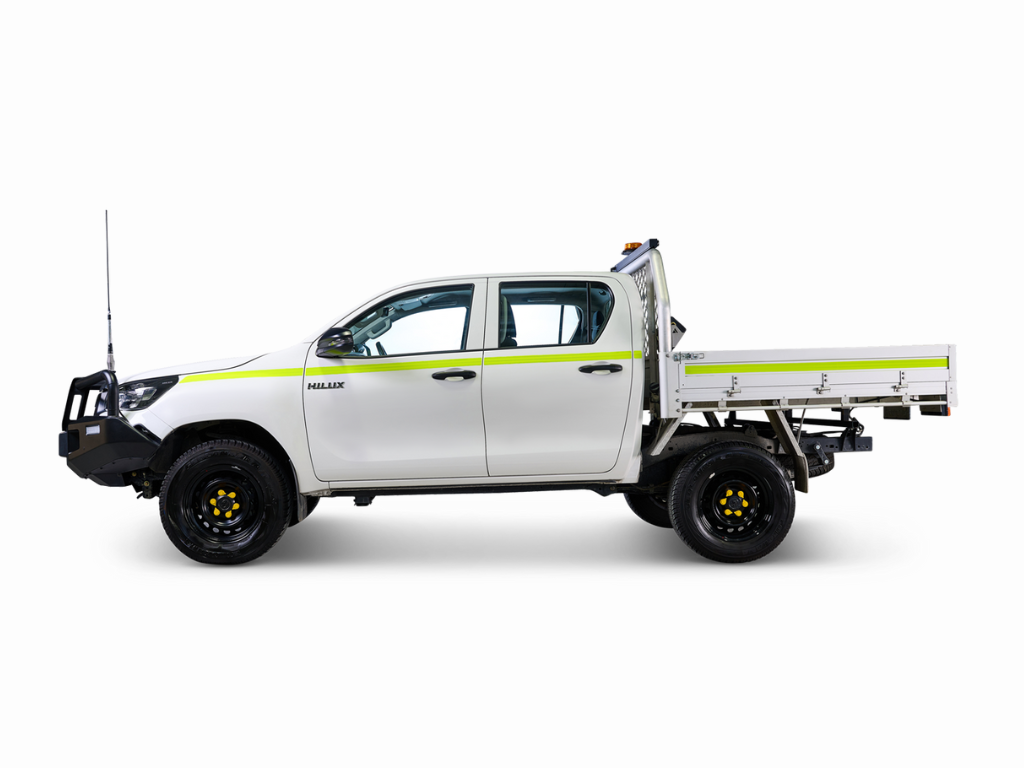
Glencore, BMA and other major operators
Glencore: Glencore’s contractor HSE requirements are long-form, site-specific and include vehicle guidance, maintenance and inspection cycles. Contractors must meet Glencore’s robust HSE expectations and often supply IVMS and vehicle inspection logs.
BMA (BHP Mitsubishi Alliance) and other large site operators (e.g., Anglo American, South32): These organisations generally align with industry norms (ROPS, IVMS, fixed seats, seat-belts, communications) but add site-specific wrinkles such as brake testing schedules, HOV fire suppression or programming requirements for digital UHF radios. Industry suppliers and rental companies publish BMA-specific notes when specs change — check the operator’s supplier/document downloads.
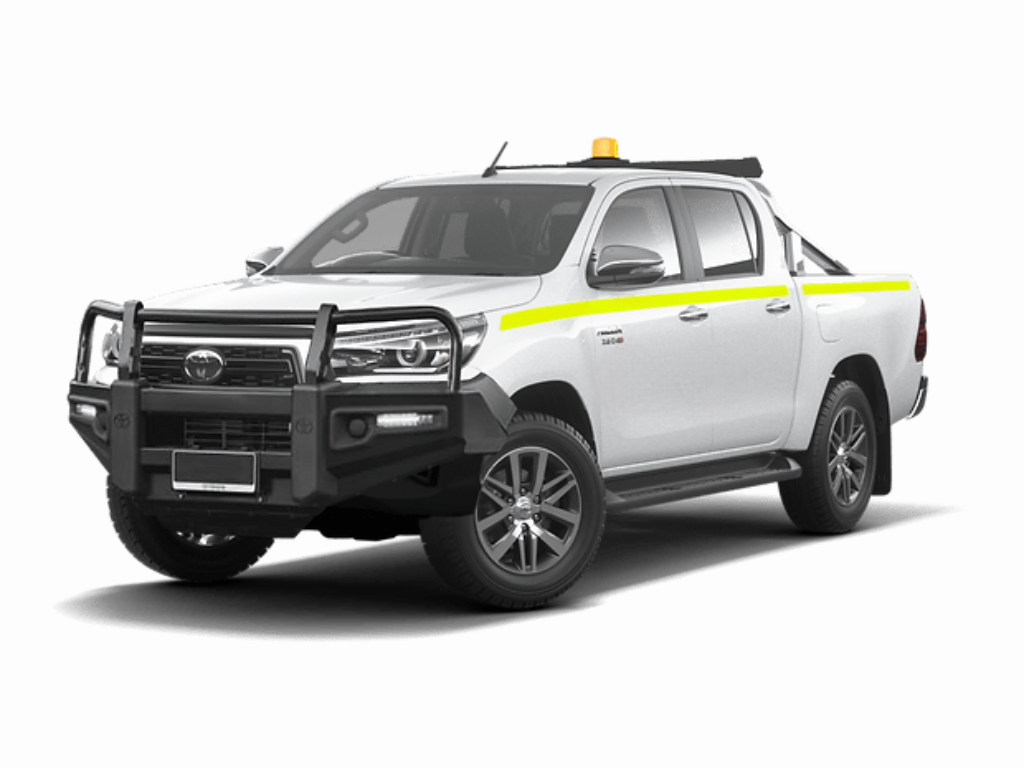
Santos, QGC, Origin and northeastern Queensland sites
What to expect: Several Queensland operators (Santos, QGC/Origin) require dedicated vehicle specifications covering IVMS, pre-op checks and fall-prevention for open trays and utility bodies. These specs can be strict about securing loads and preventing falls from rear trays. Santos, for example, has specific contractor land-transport procedures and IVMS rules.
Practical tip: If your vehicle will carry tools, equipment or personnel in the tray area, confirm whether fixed seats or specific containment are required — many Queensland sites now prohibit loose standing passengers in trays.
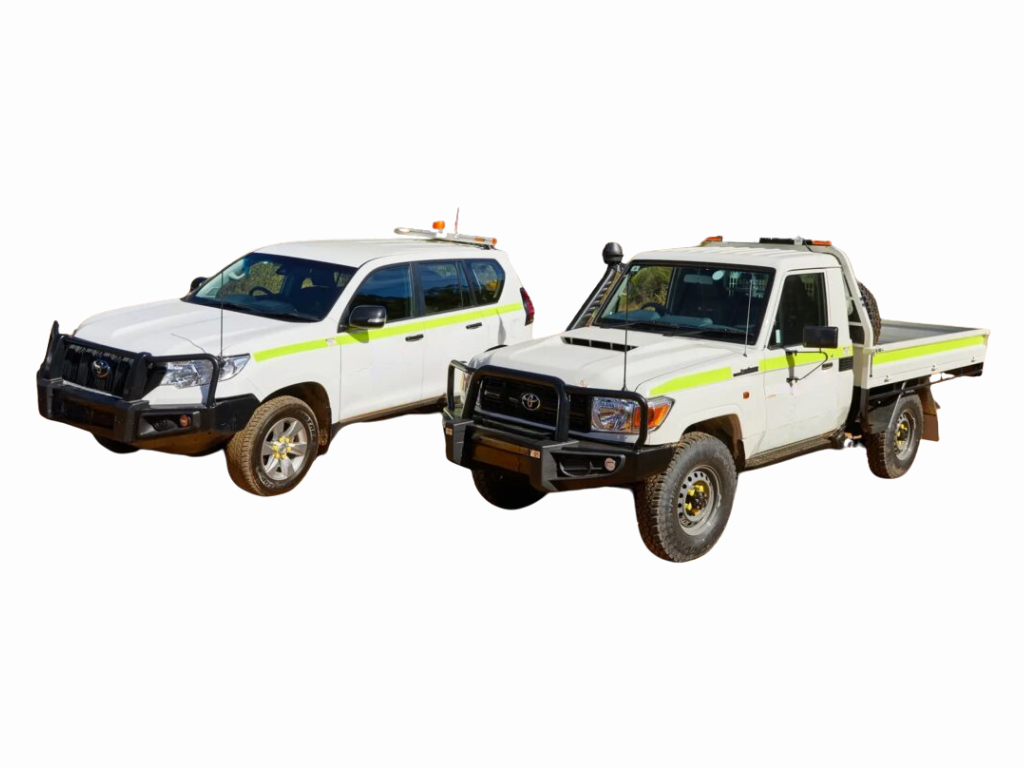
Common requirements across operators — an actionable checklist
For most sites, the following checklist will get you very close to being compliant. Use it as your pre-gate checklist:
- IVMS (GPS + logging): Installed, commissioned, and evidence of telemetry provider and reporting cadence.
- Seating & seatbelts: Fixed seats for all occupants; three-point seat belts; documented compliance.
- ROPS / Cages: If site requires rollover protection on utility bodies or specific vehicle types.
- Fire extinguisher(s): Rated extinguishers mounted and tagged (HOVs often need more).
- Beacon & signage: Rotating/LED beacon, unit numbers and high-vis decals per site spec.
- UHF radio: Correctly programmed to site frequency; proof of programming may be asked.
- Isolation switch / battery isolator: Accessible and labelled.
- No illegal aftermarket mods: Ensure bullbars, winches or lift kits don’t compromise airbag sensors or ADR compliance.
- Driver competency & documentation: Licences, medicals, induction cards, and journey risk assessments.
- Maintenance & inspection logs: Pre-start checklists and service history available.
Many fleet suppliers and retrofit houses produce a “mine-spec kit” for common vehicle models — using these kits speeds gate acceptance. Industry fitters like Minecorp, FleetCrew, Corefleet and others publish packaged offerings and checklists that align to operators’ documents.
HOVs (High Occupancy Vehicles) — special considerations
HOVs (multi-seater troop carriers and buses) are high-risk and attract stronger controls:
- Fixed seats and seatbelts for every occupant are almost universally required.
- Fire suppression, additional signage, and communication redundancy are commonly required by BHP, Rio Tinto and other operators.
- Driver licensing and passenger manifests are typically enforced.
Before booking an HOV, confirm the operator’s HOV annex and get explicit written approval if the vehicle deviates from the standard fit-out.
Documentation & approvals: how to avoid gate rejections
Most gate refusals are administrative, not technical. To avoid delays:
- Pre-submit fit-out photos and certificates where the operator portal allows.
- Maintain a compliance folder per vehicle (IVMS certificate, extinguisher tags, pre-start checklists, radio programming proof, photos showing unit numbers and decals).
- Tagged asset IDs and serial numbers on installed gear (radios, IVMS modules) speed verification.
- Keep driver training/competency proof ready — many ops require specific site inductions and licensing beyond the learner’s permit.
If you hire mine-spec vehicles (rather than owning them), select a supplier that provides the compliance folder as standard — this is often the simplest path to consistent site access. See Trend Rentals’ mine-spec compliance guide for practical hire options and pre-fit checklists. (TrendRentals mine-spec compliance explainer.)
Common stumbling blocks & how to fix them fast
- Aftermarket bullbars or light bars interfering with airbag systems: Use certified winch/bullbar suppliers who provide ADR compatibility statements.
- IVMS not reporting in operator format: Work with your IVMS vendor to supply logs in the operator’s preferred format or use the vendor they recommend.
- Unprogrammed UHF radio: Have radios pre-programmed by your fitter — digital radios sometimes need a site-specific firmware or channel plan.
- Incorrect seat configurations for HOVs: Swap to fixed-seat packages or hire a compliant troop carrier.
Where to find the authoritative specs (and why you should read them)
Always treat the mine operator’s contractor HSE specification or vehicle standard as authoritative. We referenced BHP, Rio Tinto, Fortescue, Glencore and Santos documents above — these PDFs and supplier spec packs contain the exact lists that gate security uses. Below are the primary sources we used when preparing this guide; if your vehicle will visit a site, download and read the latest operator spec and check the revision date:
- BHP — Safety / vehicle appendices (vehicle requirements).
- Rio Tinto — Vehicles & Driving Standard + related guidance notes.
- Fortescue (FMG) — Contractor minimum requirements and HSES contractor specifications.
- Glencore — Contractor Health, Safety & Environment Requirements.
- Santos — Land Transportation Procedure and contractor IVMS/vehicle rules.
Final checklist — before you pull up to the gate
- Photo of whole vehicle showing decals, beacon and unit number.
- IVMS certificate and contact for data access.
- UHF radio with proof of programming.
- Fire extinguisher tags and pre-start inspection sheet.
- Driver licences, site induction cards and journey risk assessment.
- Maintenance log and any ROPS/seatbelt certification.
If any of the above is missing, you may be refused access — so document everything and store it with the vehicle’s digital folder.
Need help making vehicles site-ready?
If you’re short on time, consider hiring mine-spec vehicles from specialist providers or working with an accredited fitter to produce a compliance folder. Trend Rentals and industry providers maintain mine-spec fleets and can often supply site-ready vehicles with the documentation packages operators expect. For deeper reading on compliance and retrofits, see our Trend Rentals posts on mine-spec compliance and why resource companies rely on mine-spec vehicles.